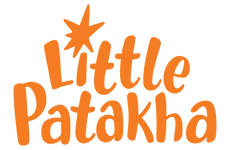Why Multilingual Play Opens the World to Our Kids
Oct 20, 2025

Children are natural mimics—singing songs, making silly rhymes, repeating words with delight. That joy is the perfect doorway into languages. When we weave different words and sounds into play, kids aren’t just learning vocabulary; they’re learning that the world is bigger, more connected, and full of ways to belong.
Why Early Language Learning Builds Stronger Brains
Kids who grow up hearing more than one language aren’t just learning words. They’re learning how to switch between systems of thought. Ellen Bialystok’s research shows that this strengthens executive function—the mental skills behind focus, memory, and flexible problem-solving.
Multilingual play also encourages empathy. When children realize that the same idea can be expressed in many ways, they begin to understand that others may see the world differently. That’s a foundation for kindness and curiosity that lasts.
And the beauty of it is how simple it can be. Singing songs in another language, reading bilingual picture books, or sprinkling greetings into daily routines shows children that language is a bridge, not a barrier. Fluency isn’t required; joy and consistency are enough.
Everyday Language Counts
Labeling objects, counting in another language, or singing songs during routines builds comfort and interest.

Play Makes Language Stick
The I See Who? Multilingual Peek-a-Boo introduces words through play, showing kids languages are joyful, not intimidating.
Quick Takeaway
Languages open the world. With playful exposure, kids build flexible minds and empathetic hearts.
Sources
- Bialystok, E. — Research on bilingualism and executive function
- NAEYC — Multilingual development in early childhood
- AAP — Language development resources


